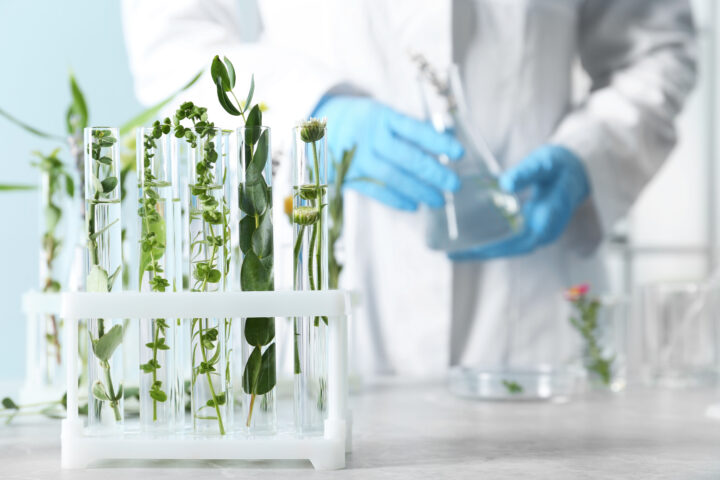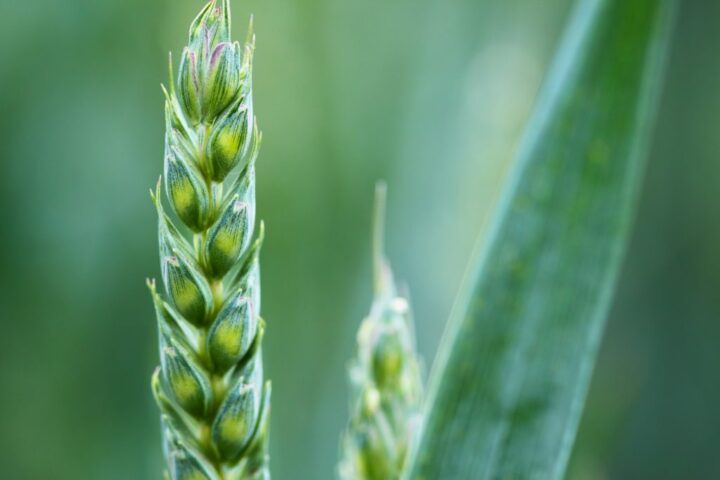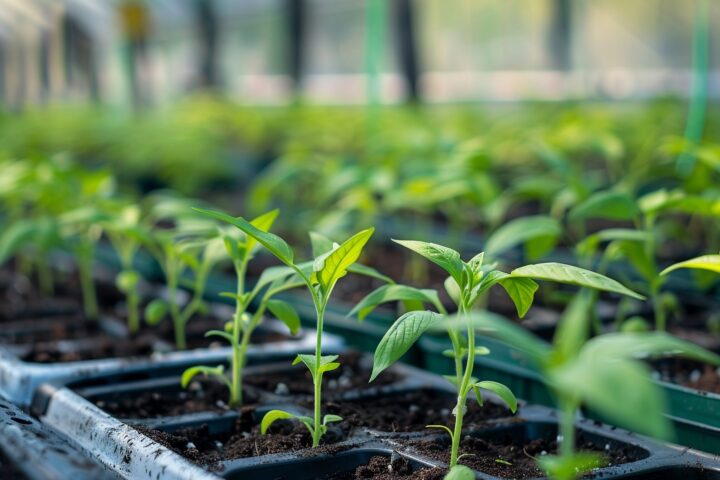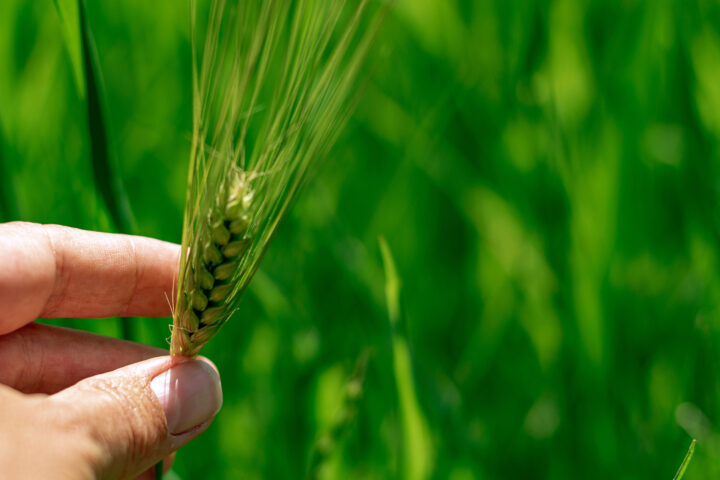
How genetic engineering is saving the Cavendish banana
The most popular banana variety - the so-called Cavendish banana - could soon disappear due to a persistent fungus. Australian researchers have developed a solution based on genetic engineering.
Tuesday, April 23, 2024
Hardly any other fruit is as popular as the banana. It is sweet, practical for travelling and filling. Bananas - which in this country are almost always of the Cavendish variety - are one of the most eaten fruits in Switzerland.
For some years now, however, our much-loved banana has been under threat. A new disease - specifically a fungus called Tropical Race 4 - is increasingly threatening the variety. This is reported by SRF podcast News Plus. The fungus has it all: it not only infects the banana, but is even capable of killing the entire plant in a short space of time. The disease thus destroys entire harvests. This means a huge loss for the affected farmers and it can take a long time before the replacement for the dead plants bears fruit again. Banana lovers in faraway Switzerland have hardly noticed this so far, as the local purchasing power is sufficient to import bananas from other growing regions. Over the years, however, bananas will probably become rarer and more expensive.
Bananas have been threatened with extinction before
However, a genetically modified Cavendish banana could now provide relief for the farmers affected: The first of its kind has been authorised in Australia. This differs from the conventional banana in only one gene. Specifically, this is a gene that was cut out of a wild ancestor of the Cavendish banana. This was responsible for making the banana resistant to certain diseases - including the new fungus.
Incidentally, such a ‘catastrophic’ banana disease already existed in the past: before the Cavendish banana, in the first half of the twentieth century, the so-called ‘Big Mike’ banana was the most popular banana. One of the reasons why this variety was so popular with consumers was that it had no seeds. In the 1950s, however, a disease made life difficult for ‘Big Mike’. As there was no genetic engineering at the time of ‘Big Mike’, a completely new variety had to be developed. The Cavendish banana, which was resistant at the time, was the answer.
New breeding technologies are increasingly in demand
Now - a good 70 years later - a new fungus has emerged that is destroying the banana trees. However, the Cavendish banana is not alone in its problems: numerous other fruit and vegetable varieties are also suffering from new diseases that are spreading rapidly. Crops that are propagated using seedlings (so-called vegetative propagation) are particularly susceptible, as this means that all plants are very closely related and therefore equally susceptible to the same disease - which is precisely the case with banana trees. However, many crops are also propagated vegetatively in this country, such as potatoes (remember late blight, which caused famine in Europe in the 19th century), garlic and asparagus. The consequences of climate change, among other things, are constantly throwing a spanner in the works for producers. Calls for new breeding technologies are therefore becoming louder and louder.
How genetic engineering saved an entire industry
In the 1990s, the papaya harvest in Hawaii fell by more than half due to a virus. It took years of research and the successful ‘vaccination’ of papaya with modified genes to save papaya production in Hawaii. Scientific studies have also shown that the consumption and cultivation of the virus-resistant rainbow papaya did not cause any damage. The genetically modified papaya is safe for both humans and the environment. In the meantime, genetically modified papaya varieties have been authorised in numerous countries.
In October last year, swiss food hosted a panel discussion on the topic of genome editing ‘Between protest and potential’. You can find the video here. If you want to get an idea of the worldwide resistance that has formed against genetic engineering, you can watch the documentary film ‘Food Evolution’. The rainbow papaya is part of the story.
But why couldn't mixed cultures be the salvation of bananas? As Remco Stam, researcher and professor of plant pathology, explains to ‘SRF’, banana plantations are often very large and should produce fruit that is as uniform as possible so that harvesting, storage and transport can be carried out easily and more cost-effectively. ‘Of course, this is usually rather difficult with mixed crops,’ says Stam. Higher prices would be the result.
Why more robust varieties are increasingly in demand
Particularly for crops with little diversity, such as bananas, which are propagated by seedlings and where consumers are used to consistent quality, new breeding technologies or, as in this case, more ‘old-fashioned’ cis-gene techniques offer attractive opportunities to meet these requirements. Interest in breeding more robust varieties is growing. Although research on the GM banana is promising, it still has to be cultivated and proven in agricultural practice.
If you think about the variety and flavour, which should remain the same, potatoes would be an interesting example for Switzerland - similar to bananas. The Swiss parliament has already shown itself to be open to new breeding technologies. After the National Council, the Council of States has also spoken out in favour of relaxing the moratorium on genetic engineering. Meanwhile, things are also moving in the EU. This is urgently needed if Switzerland and the EU are not to be left even further behind.
Sources
SRF podcast News Plus, 16 March 2023
Kindly note:
We, a non-native editorial team value clear and faultless communication. At times we have to prioritize speed over perfection, utilizing tools, that are still learning.
We are deepL sorry for any observed stylistic or spelling errors.
Related articles

Green biotech: safety concerns no longer hold water
At the end of October, swiss-food.ch hosted a film screening and panel discussion in Zurich on the subject of genome editing entitled “Between Protest and Potential”. The well-attended event dealt with the emotional debates in recent decades surrounding genetic engineering. The event showed that the situation has changed fundamentally.

Green genetic engineering: A rethink is required
There are now more skeptics than ever before when it comes to biotechnological plant breeding methods, despite 30 years of research having produced a clear data basis. Conventional genetic engineering or the more modern CRISPR/Cas method present no increased risks compared to traditional breeding methods, such as cross-breeding.

Nutrition: Does the future belong to the green gene scissors?
New plant varieties contribute to security of supply. The new breeding methods known as "gene scissors", such as Crispr, have the potential to revolutionise agriculture and nutrition.

Sales bans due to PFAS: Should we be worried?
After spectacular sales bans on fish and meat due to PFAS contamination, consumers are asking themselves: How dangerous are these substances really – and what can still be placed in the shopping basket without concern?

How German Experts View New Breeding Techniques
In hardly any other country is the idyllic image of organic farming cultivated in the public sphere as carefully as in Germany. Naturalness and rural authenticity are powerful mental refuges for many Germans. Against this backdrop, it is hardly surprising that resistance to new breeding techniques is strong – and that ignorance about the realities of organic farming sometimes appears almost deliberate.

Why consumers accept gene-edited foods on their plates
Acceptance of gene-edited foods increases when the tangible benefits for consumers are easy to understand. A recent study by the Center for Food Integrity (CFI), conducted in collaboration with FMI – The Food Industry Association, shows that consumers evaluate technologies such as genome editing positively when they recognize clear advantages for health, the environment, or food security.

Beautiful and delicious mutants on your plate: The misunderstood world of crop improvement
When most of us hear the word mutation, the images that come to mind are not positive. We think of radioactive monsters, comic book villains, or genetic diseases like sickle-cell anemia. In popular culture, “mutants” are often synonymous with danger. Possibly the most famous are Marvel’s X-Men, who have enjoyed four big-screen incarnations and an enduring place among sci-fi movie aficionados.

